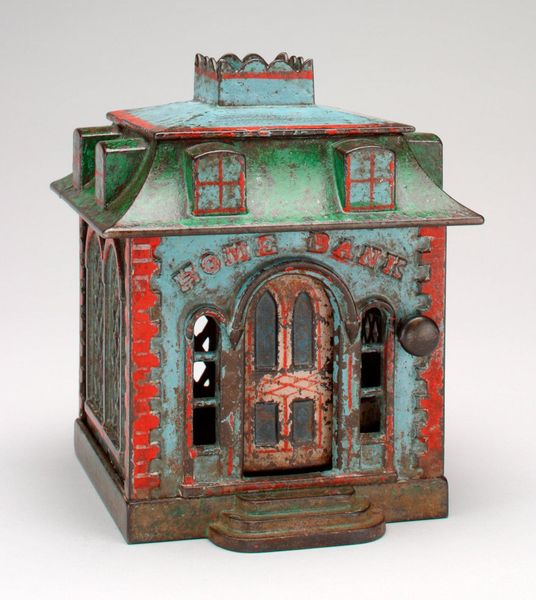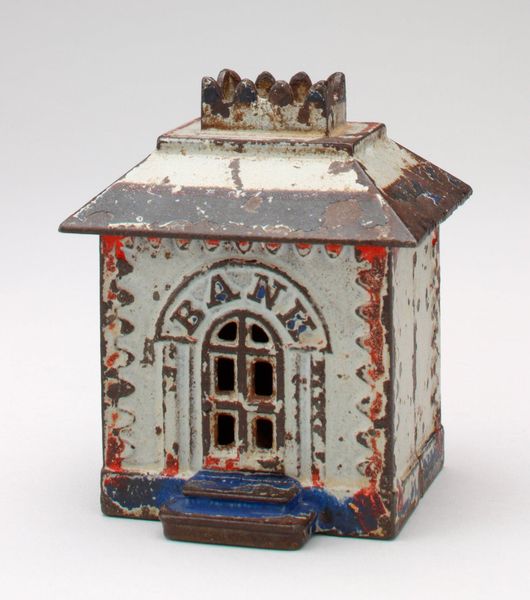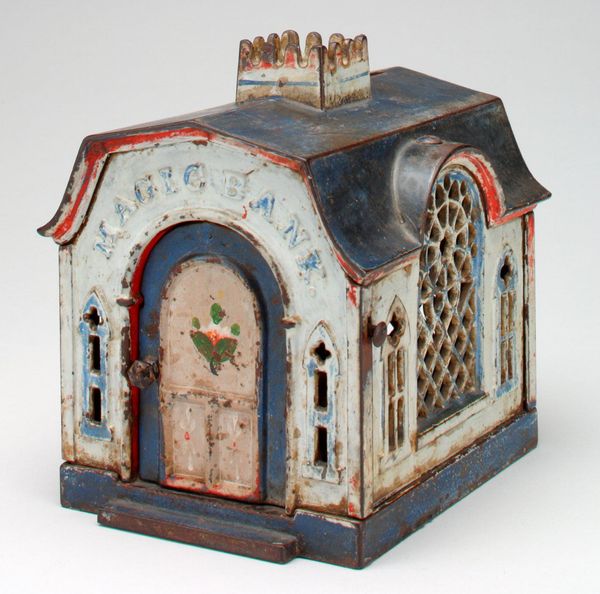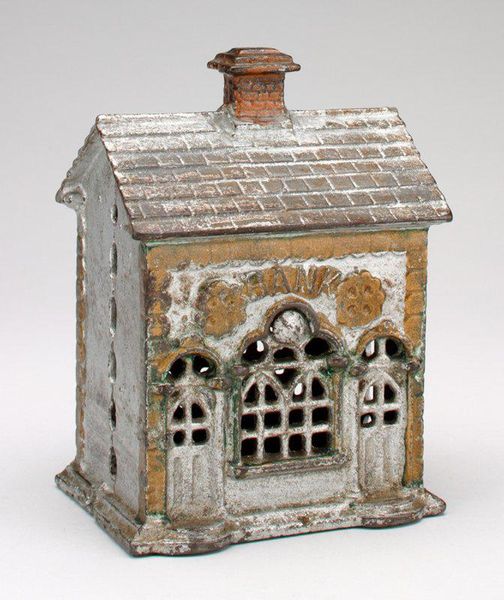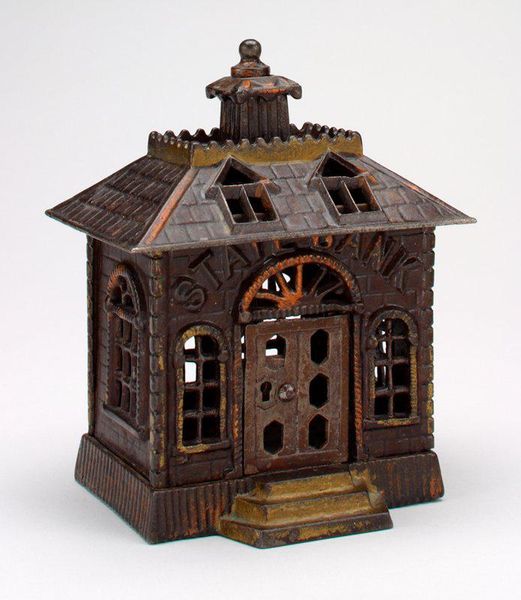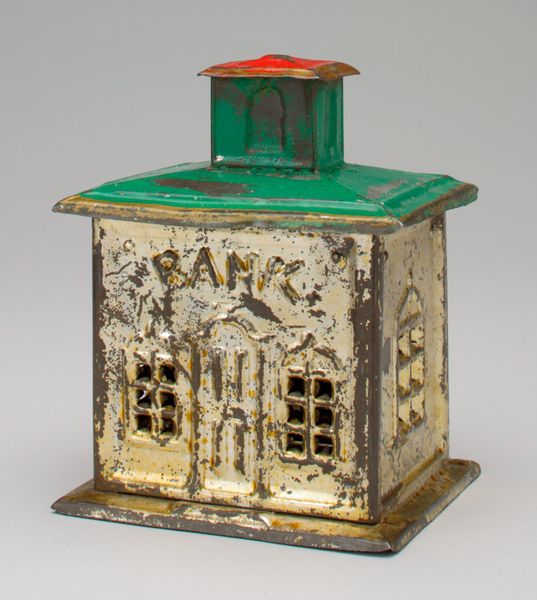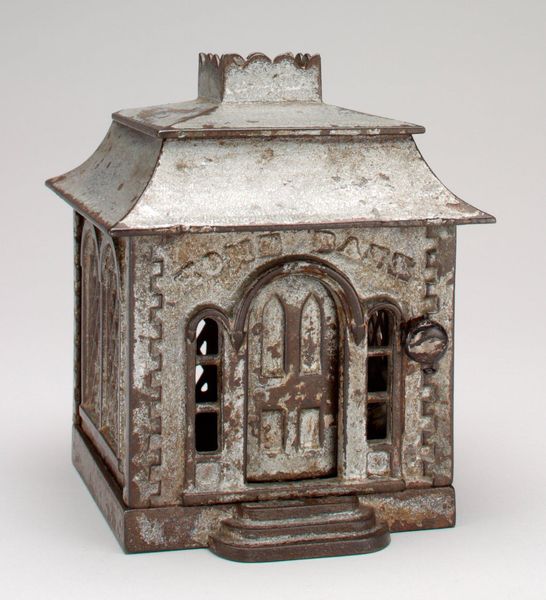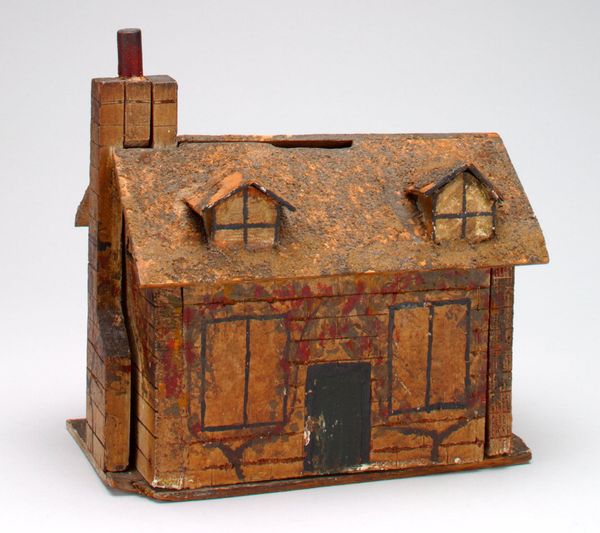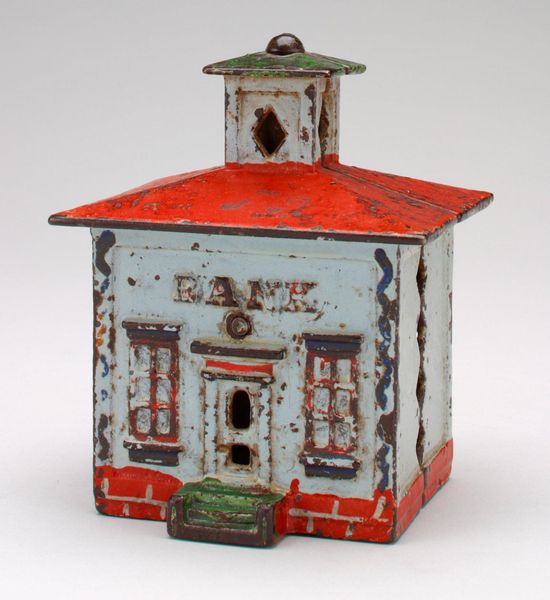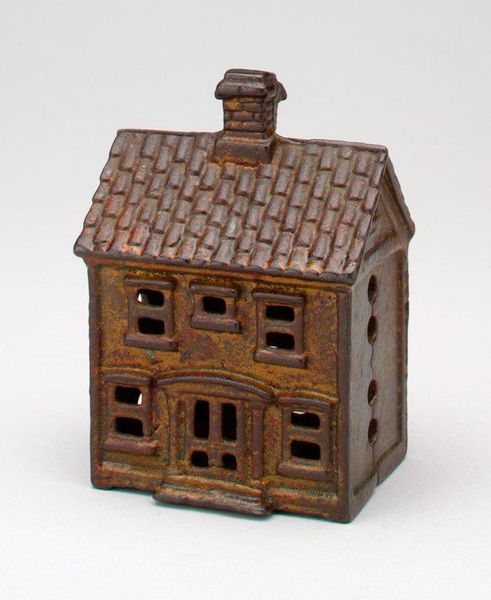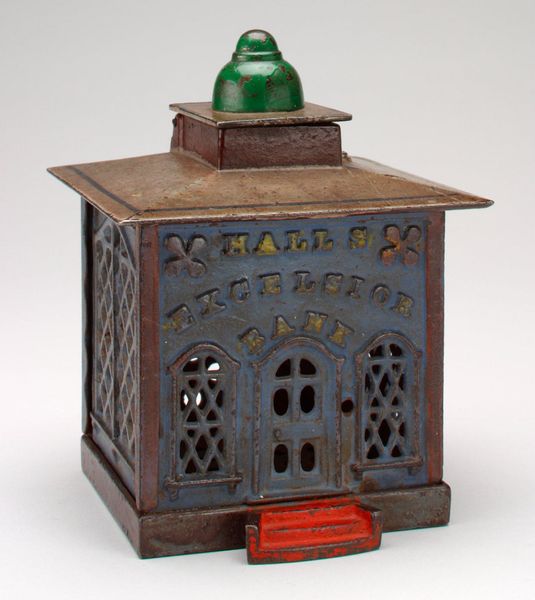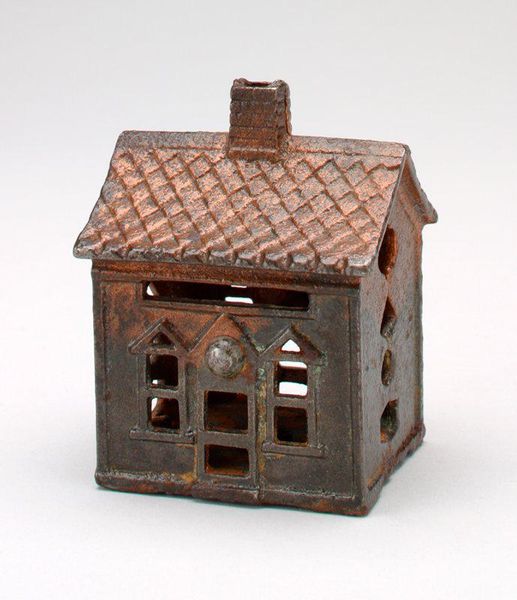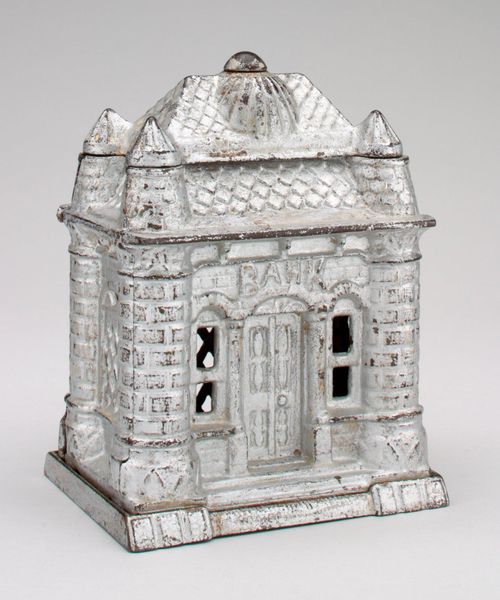
mixed-media, pigment, assemblage, painting, metal, ceramic, architecture
#
mixed-media
#
pigment
#
assemblage
#
painting
#
metal
#
appropriation
#
ceramic
#
historic architecture
#
folk-art
#
architecture
#
decorative-art
#
architecture
Copyright: Public Domain
Editor: Here we have the “Novelty Bank,” made in 1872. It seems to be an assemblage of metal and other mixed media. I am struck by how playful and colourful it is. How might we interpret such a piece? Curator: This "Novelty Bank" speaks volumes about the social values of the late 19th century. The act of saving, particularly among children, was heavily encouraged, shaping them into responsible future citizens. What do you think about how this little 'bank building' ascribes an architectural, monumental importance to that virtue? Editor: I see what you mean. Building saving habits…literally. But isn’t it just a cute, decorative piece? Does it really have that much weight beyond function and aesthetic? Curator: Not only that, it suggests the rise of industrial production and a growing middle class with disposable income. How do you feel this bank contributes to our understanding of Victorian-era material culture and ideas about consumerism? Does it complicate or support traditional readings? Editor: Well, the decorative aspect, especially its design as a "building", may downplay the purpose of money storage and encourage more decorative consumption…I never considered banks as cultural artifacts before, only practical objects! Curator: Precisely! Everyday objects like this mechanical bank become invaluable tools for understanding historical contexts, power dynamics, and how different forms of savings practices evolved during industrialization. Do you agree that placing this "folk-art" and "decorative-art" piece within an economic history also helps understand its forms? Editor: That’s fascinating! Thinking about its social role makes me look at it in an entirely new light. Thanks for offering that perspective. Curator: And thank you for seeing it afresh with me; it's important to reconsider such pieces within socio-political settings.
Comments
No comments
Be the first to comment and join the conversation on the ultimate creative platform.
